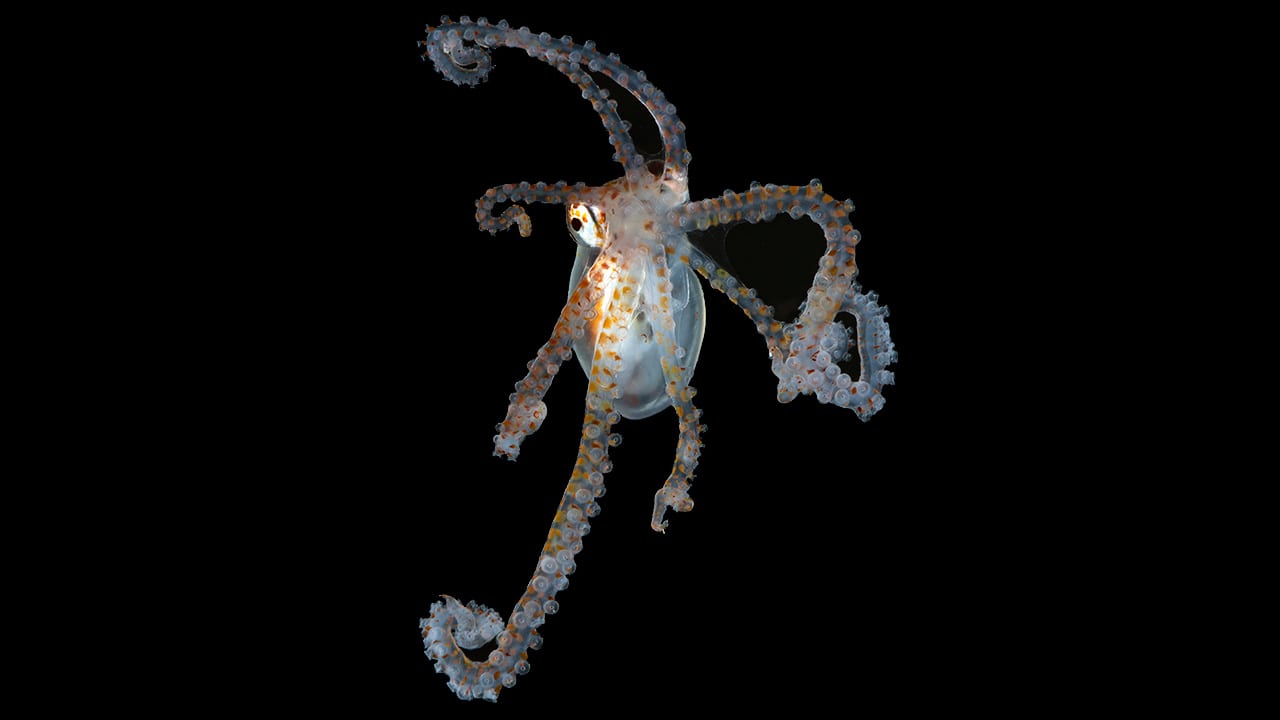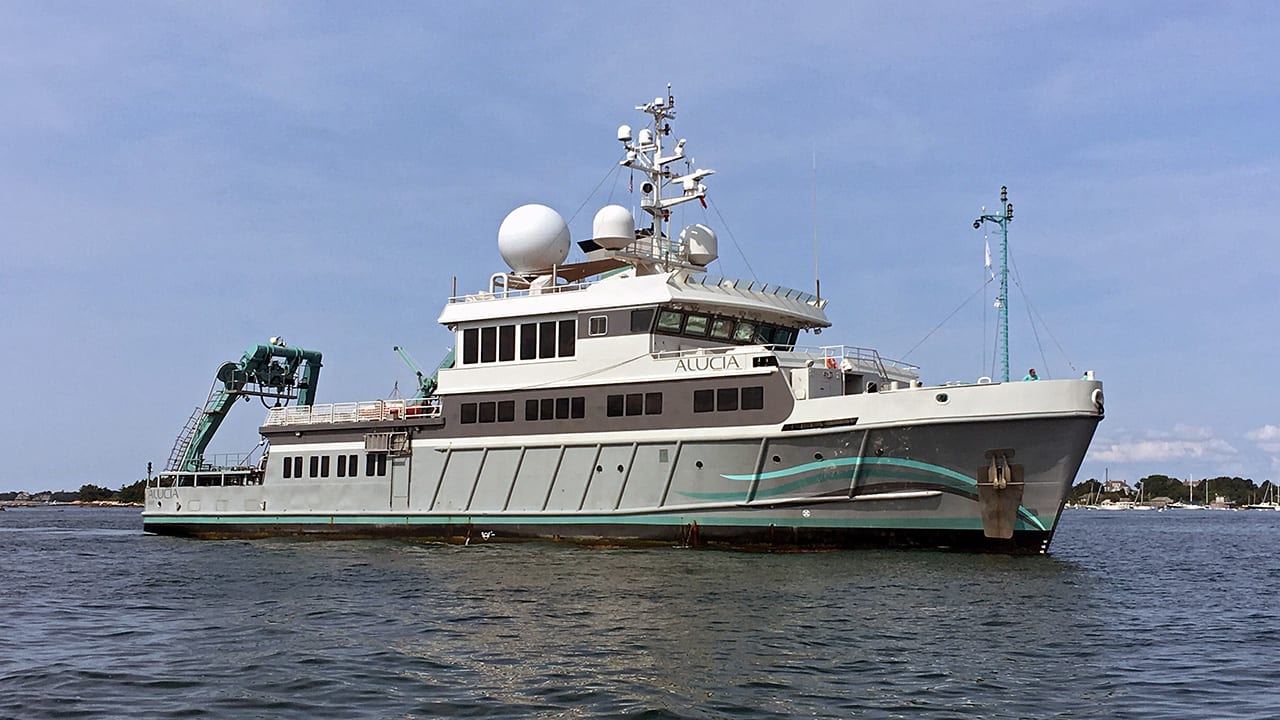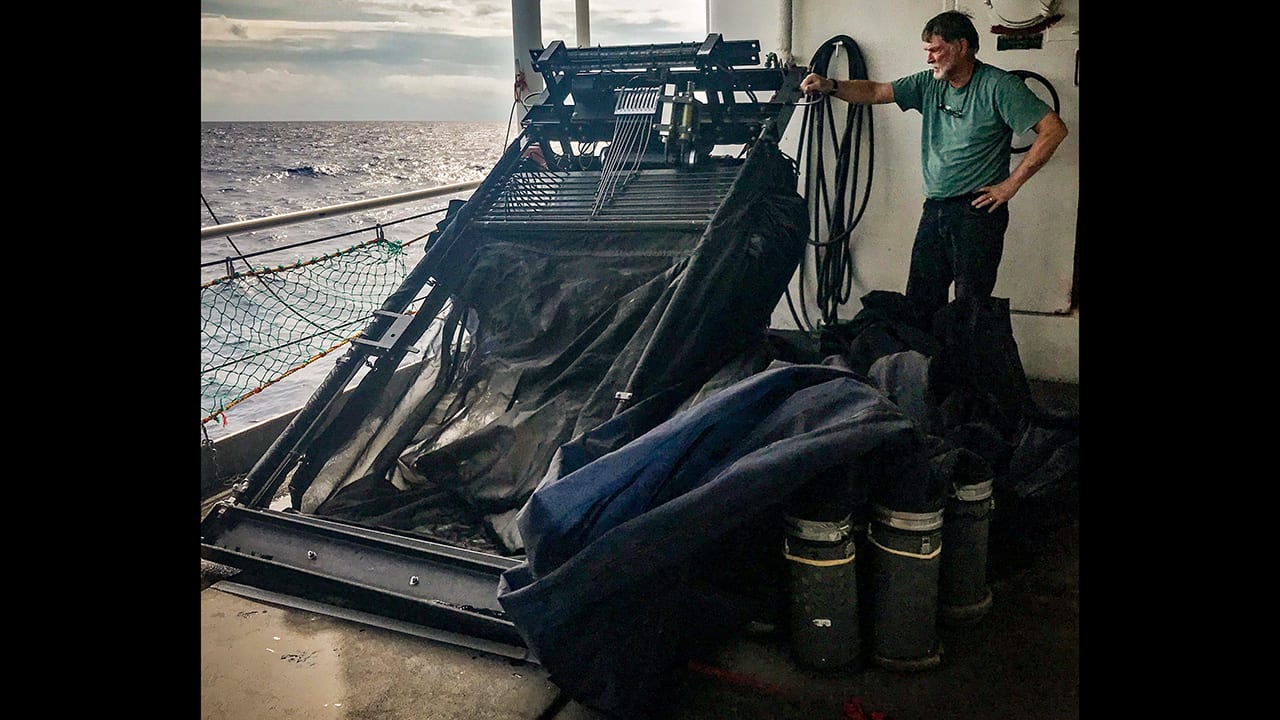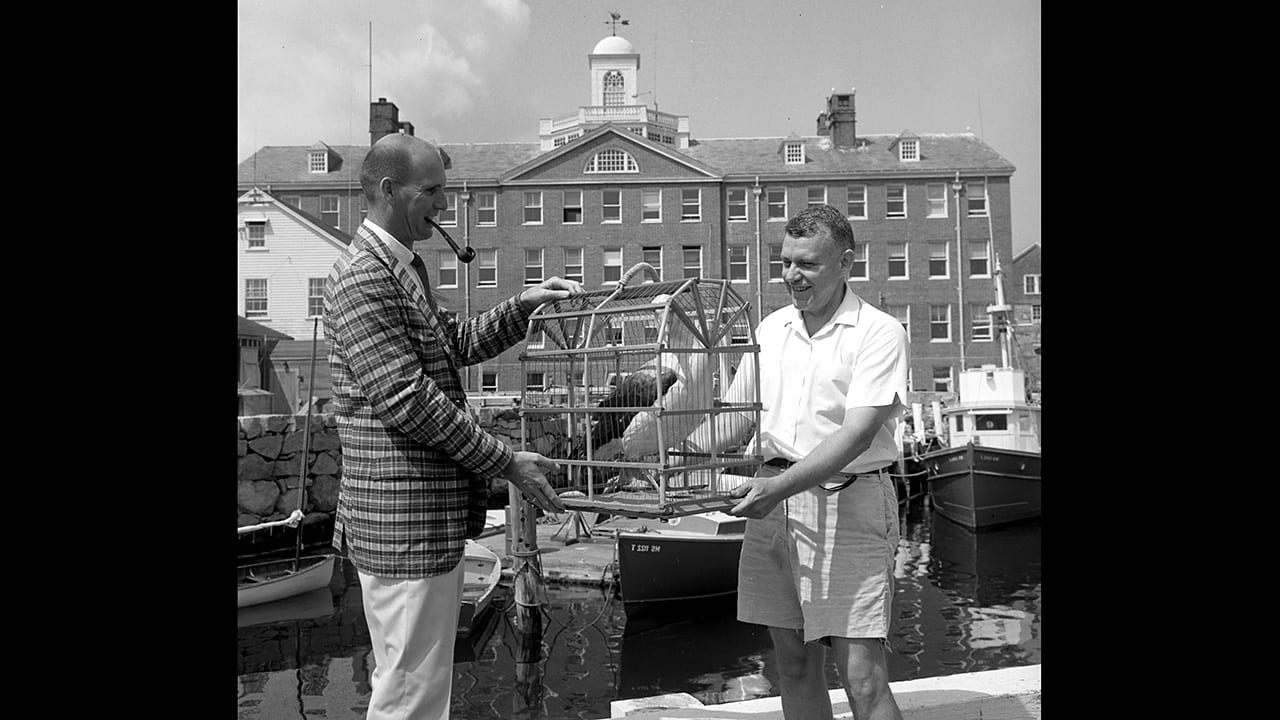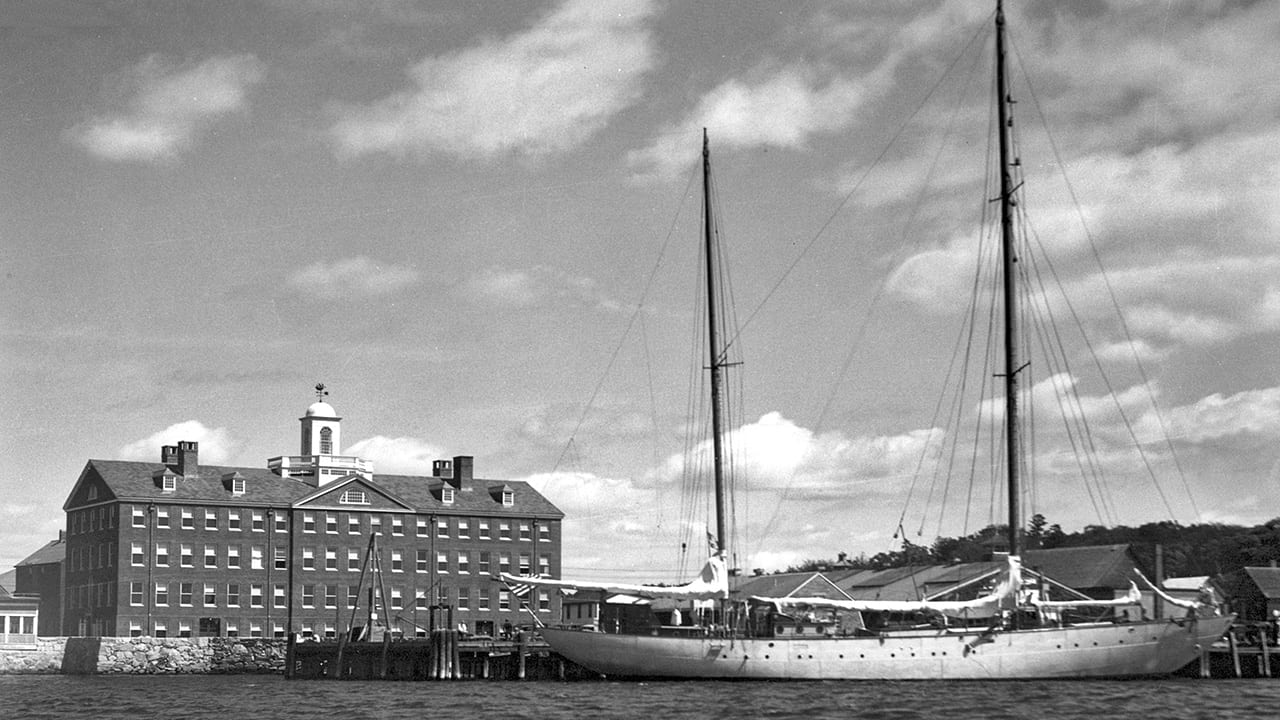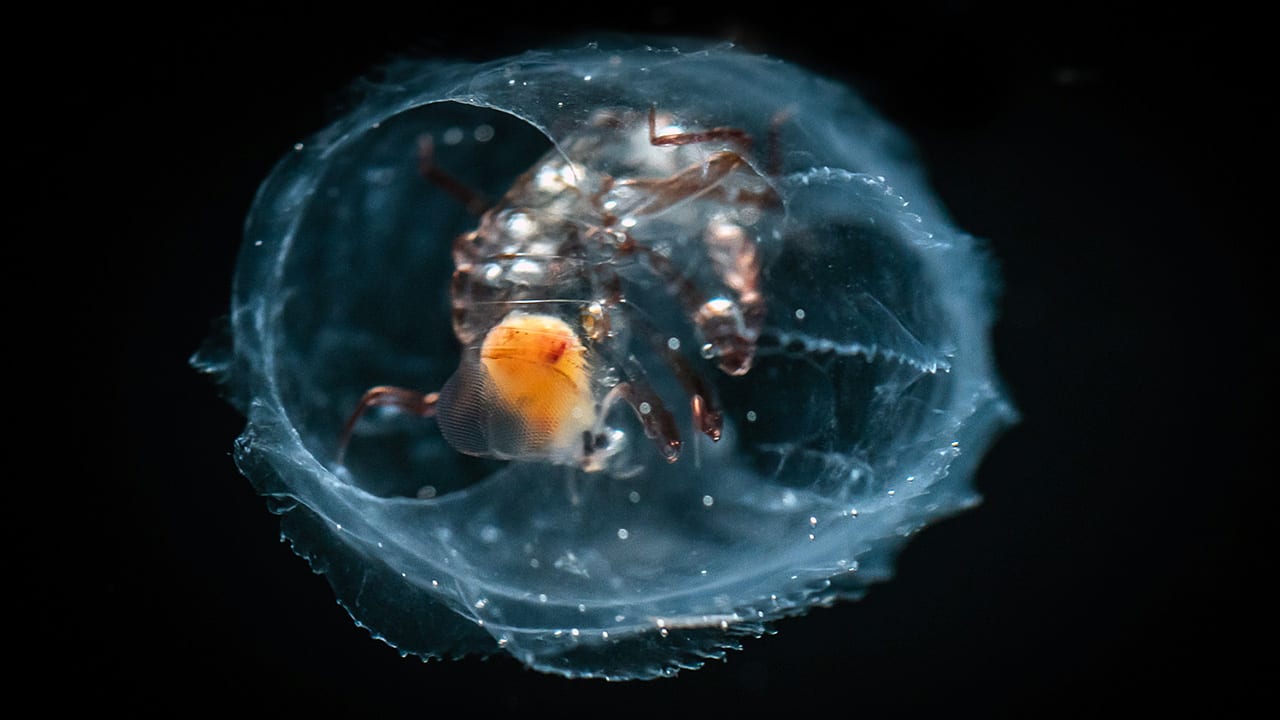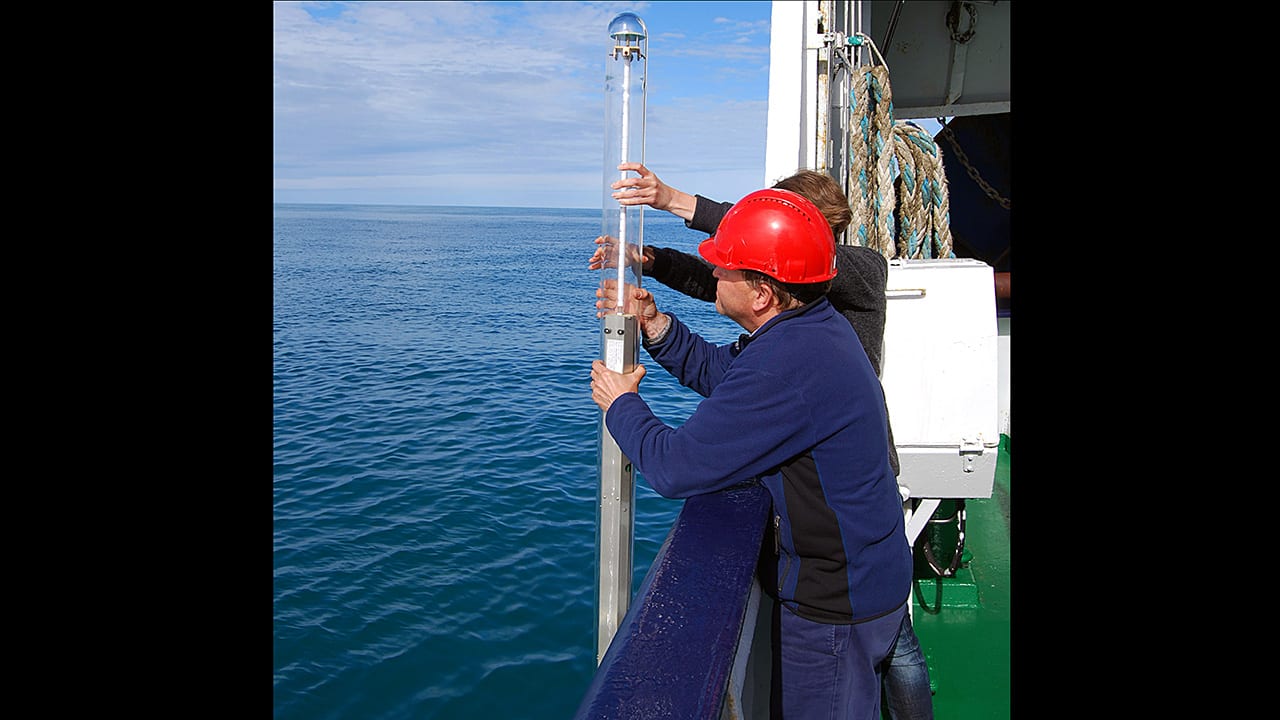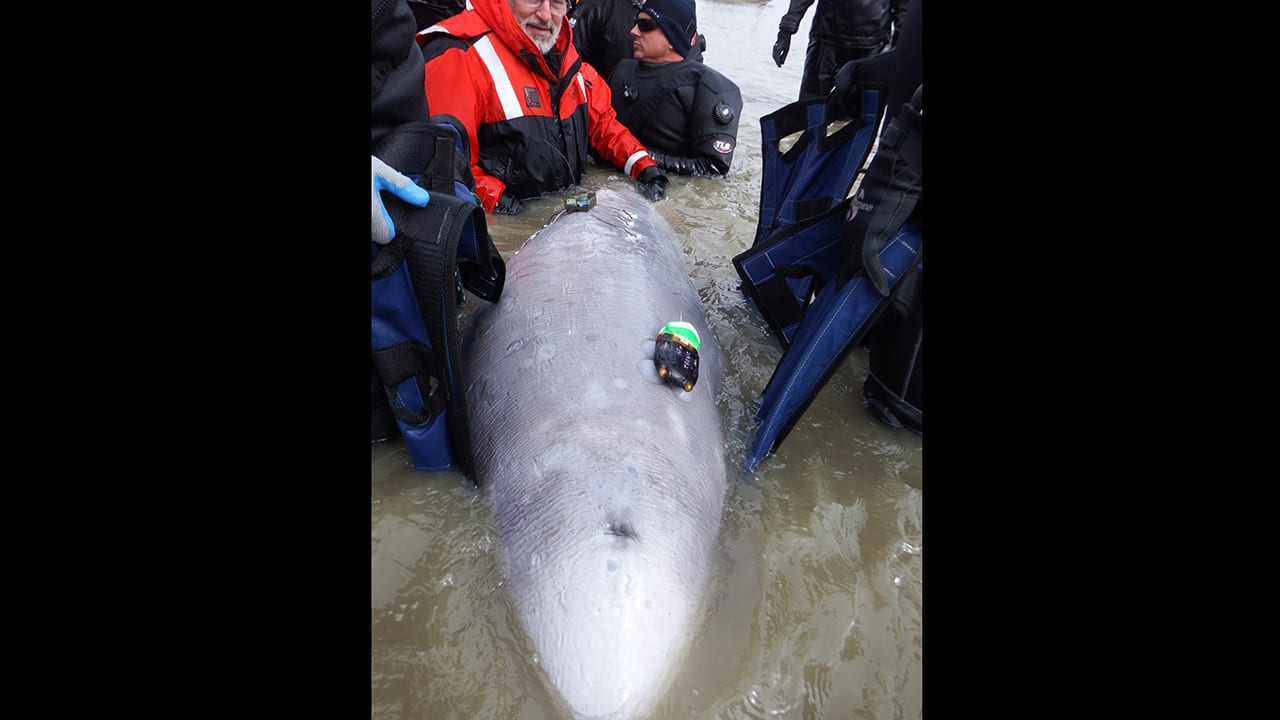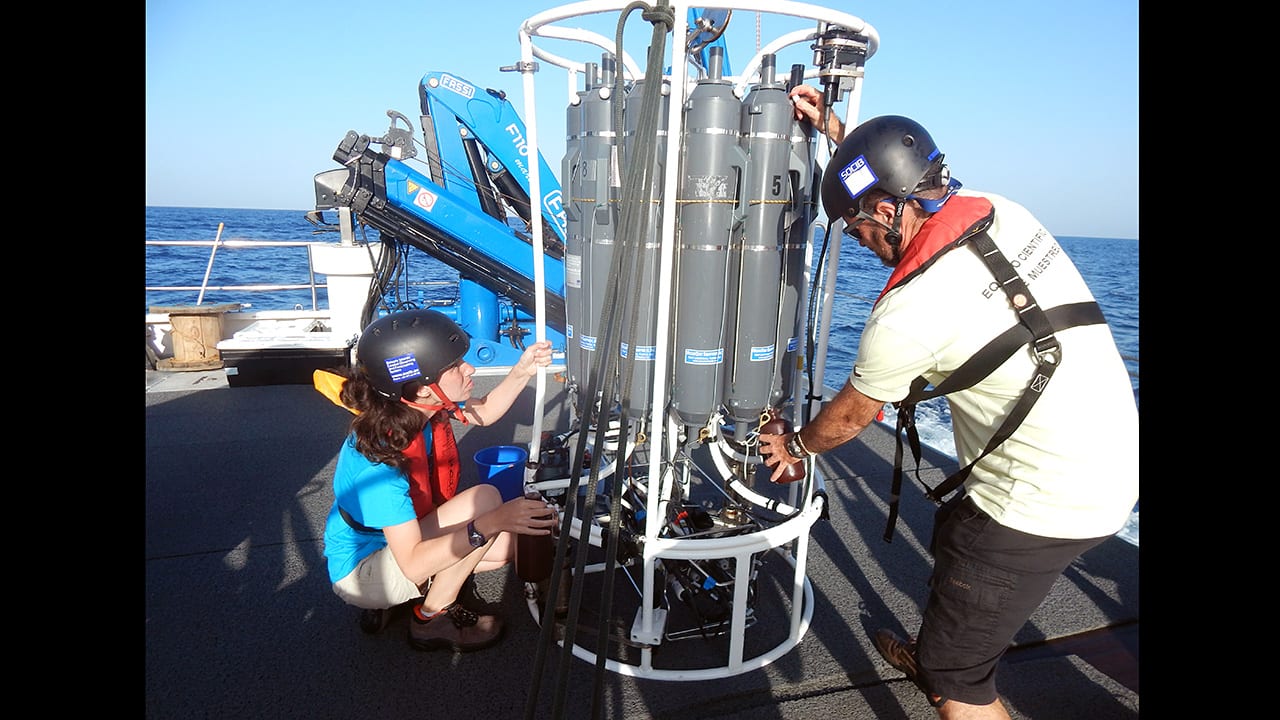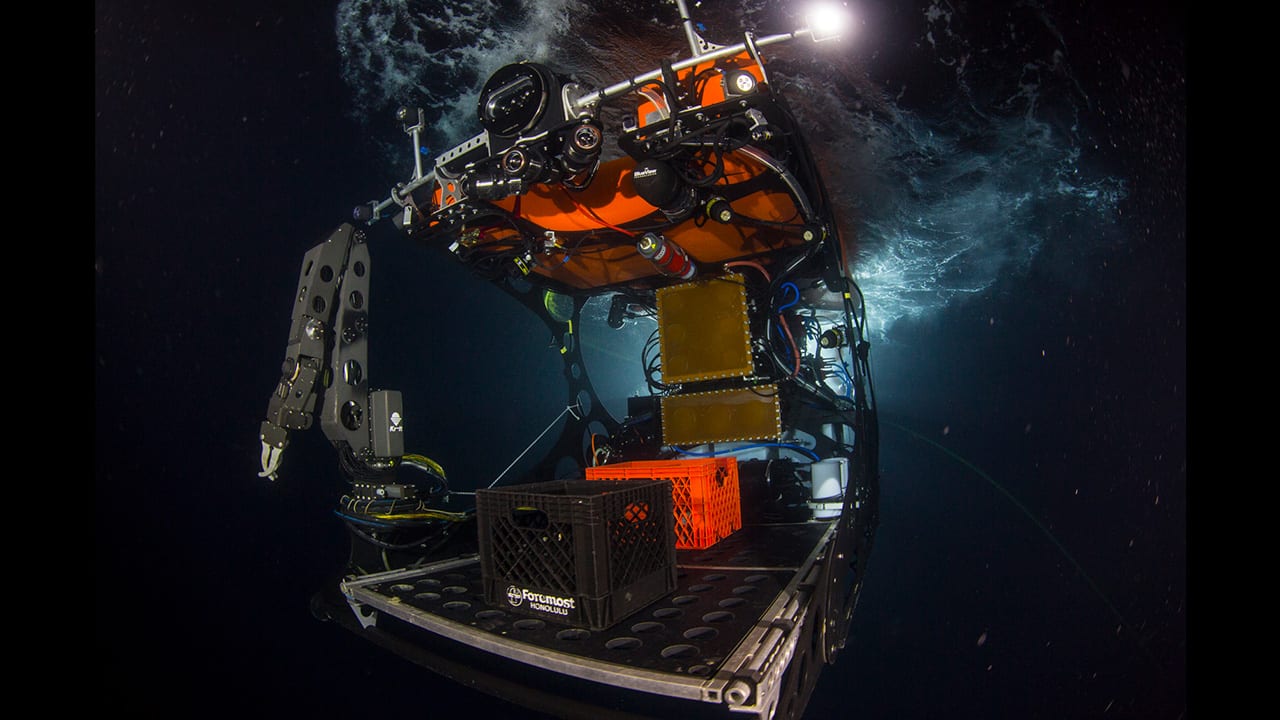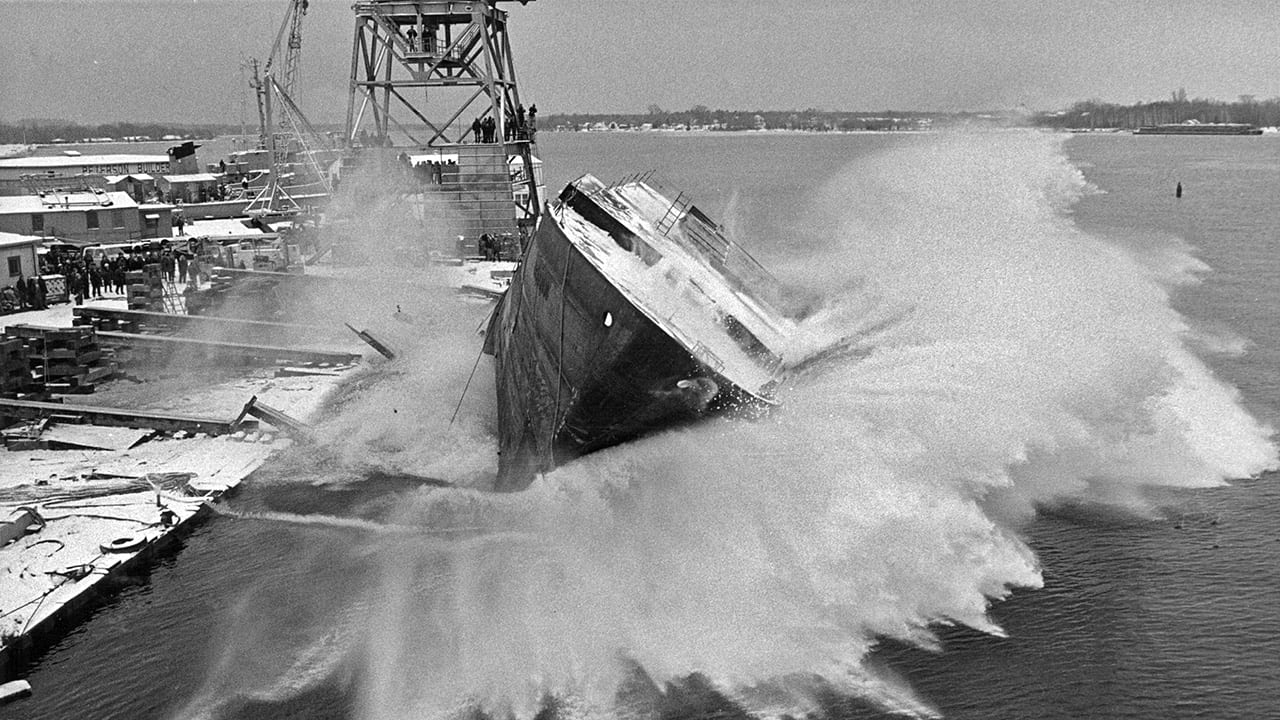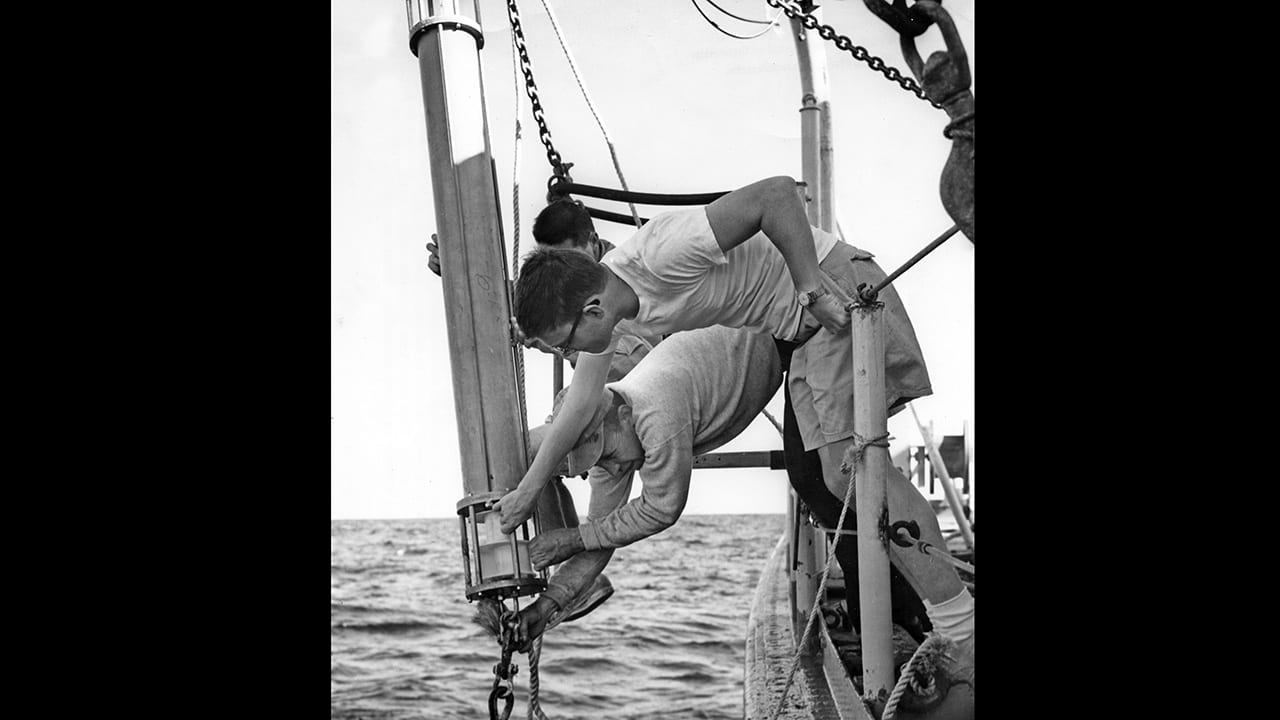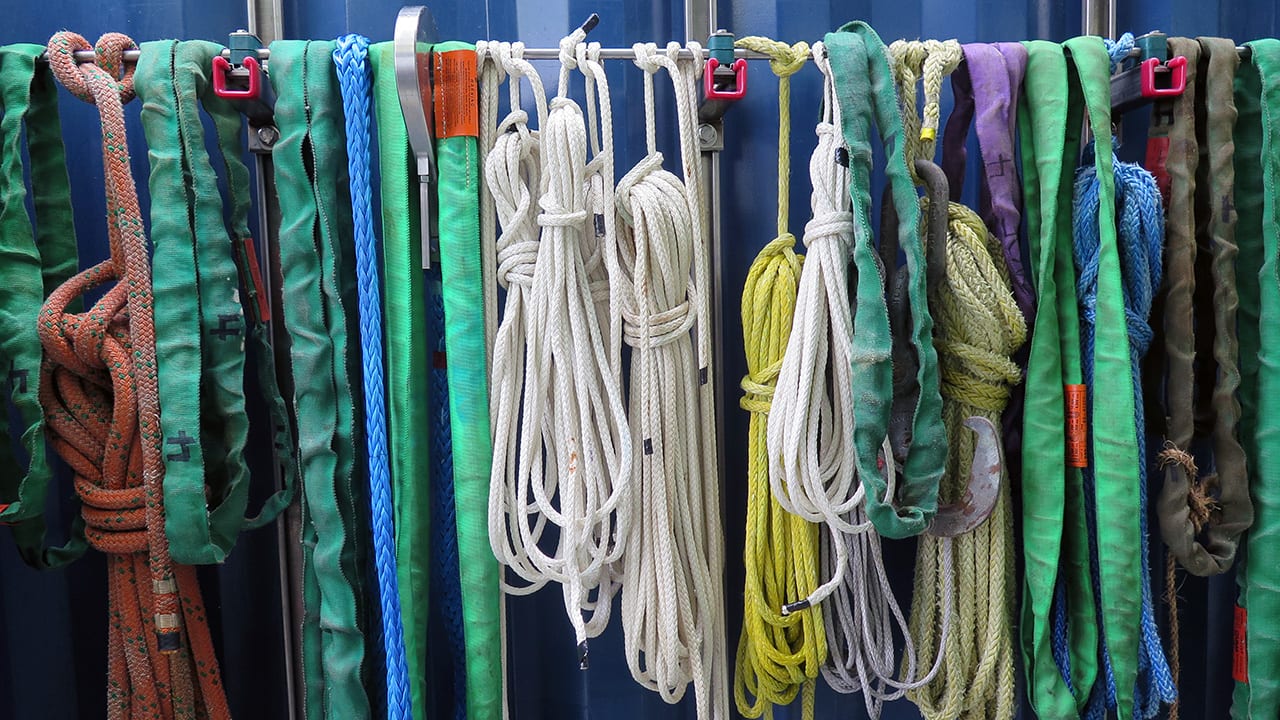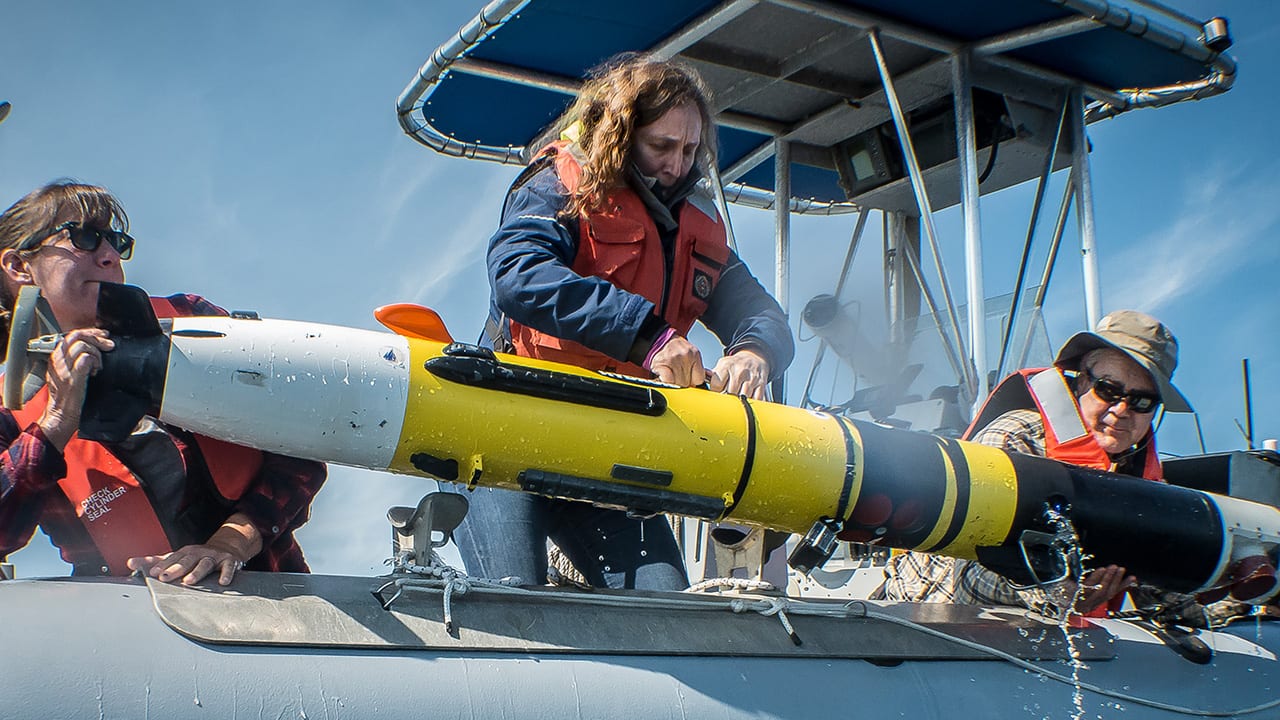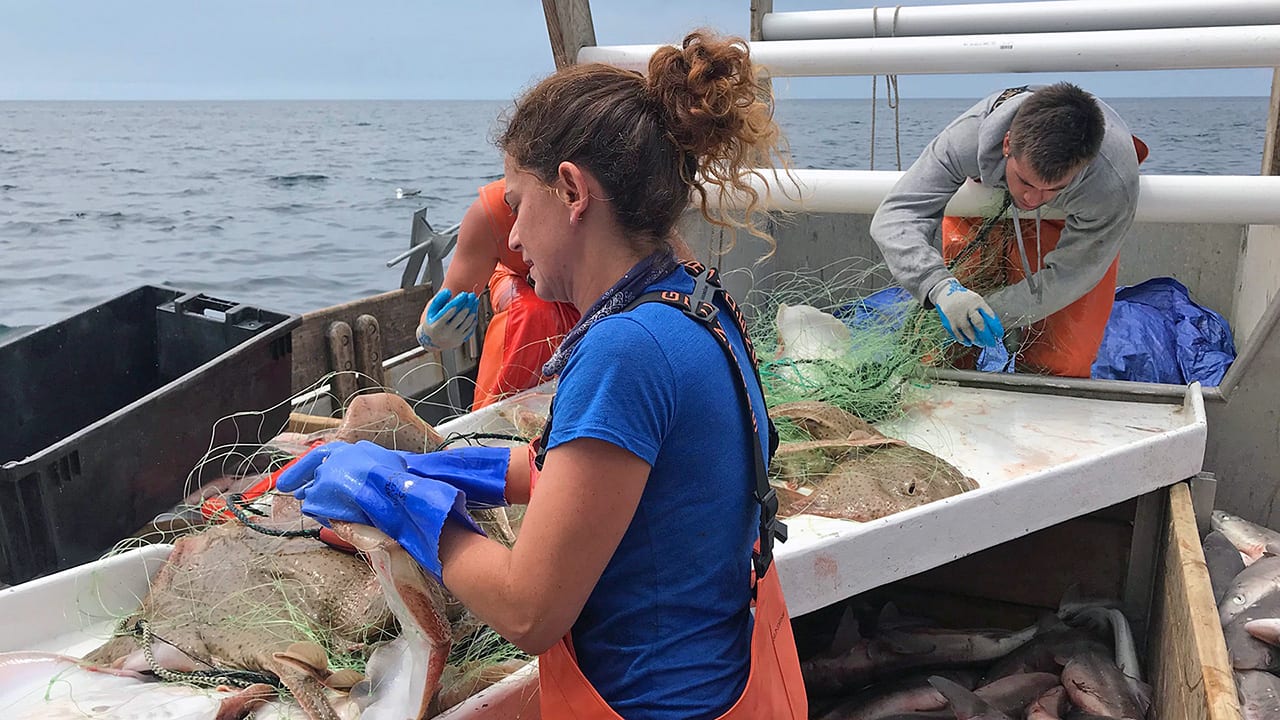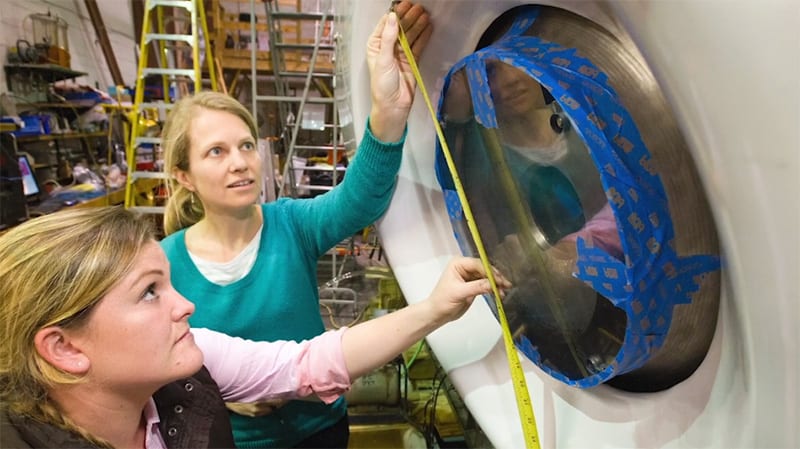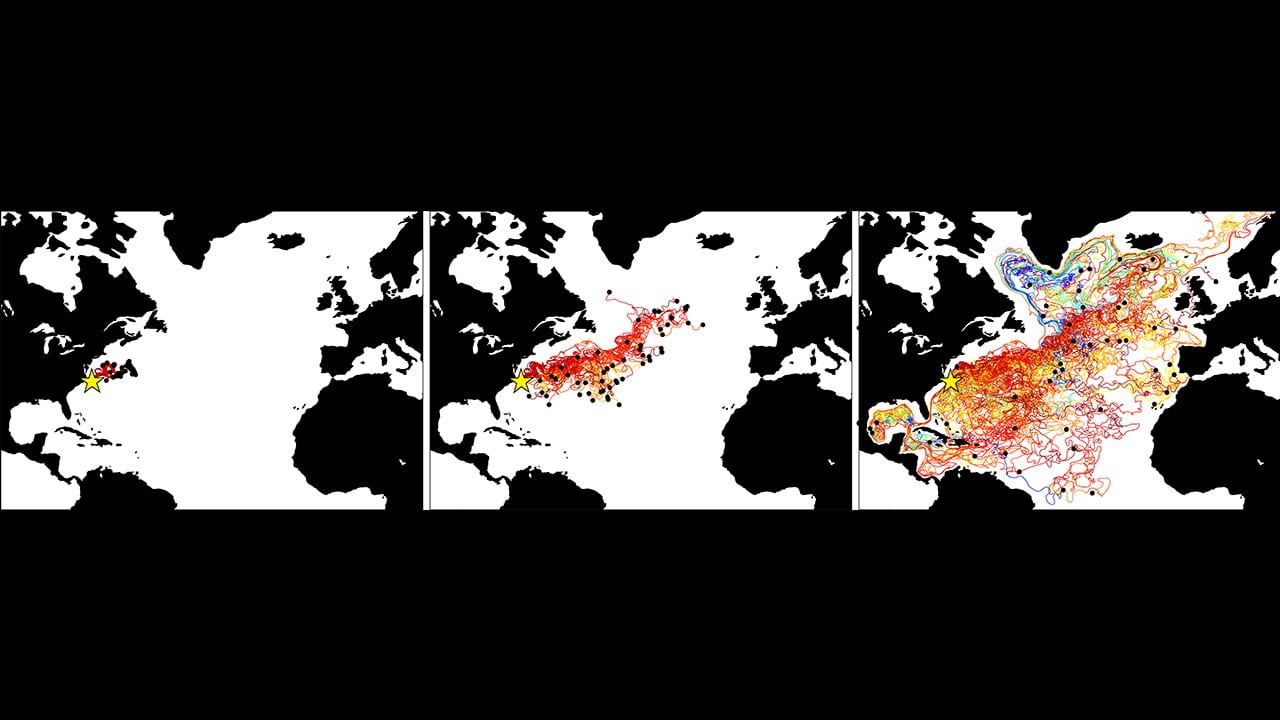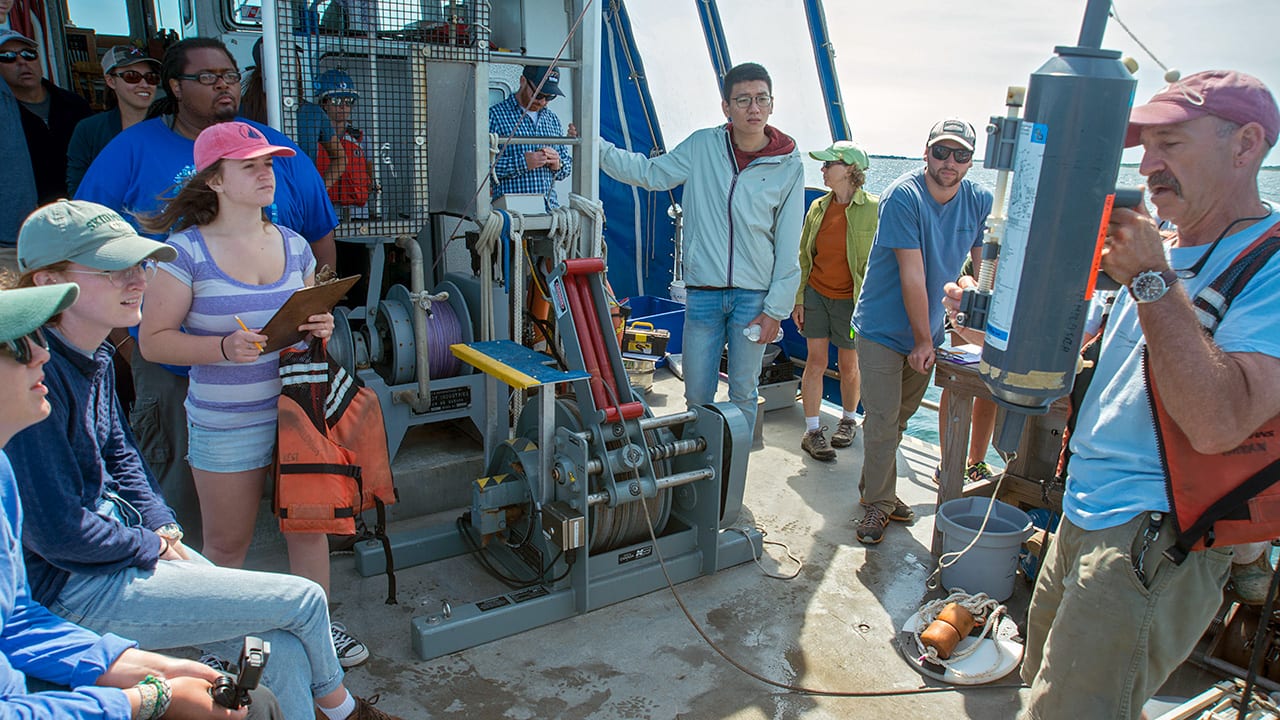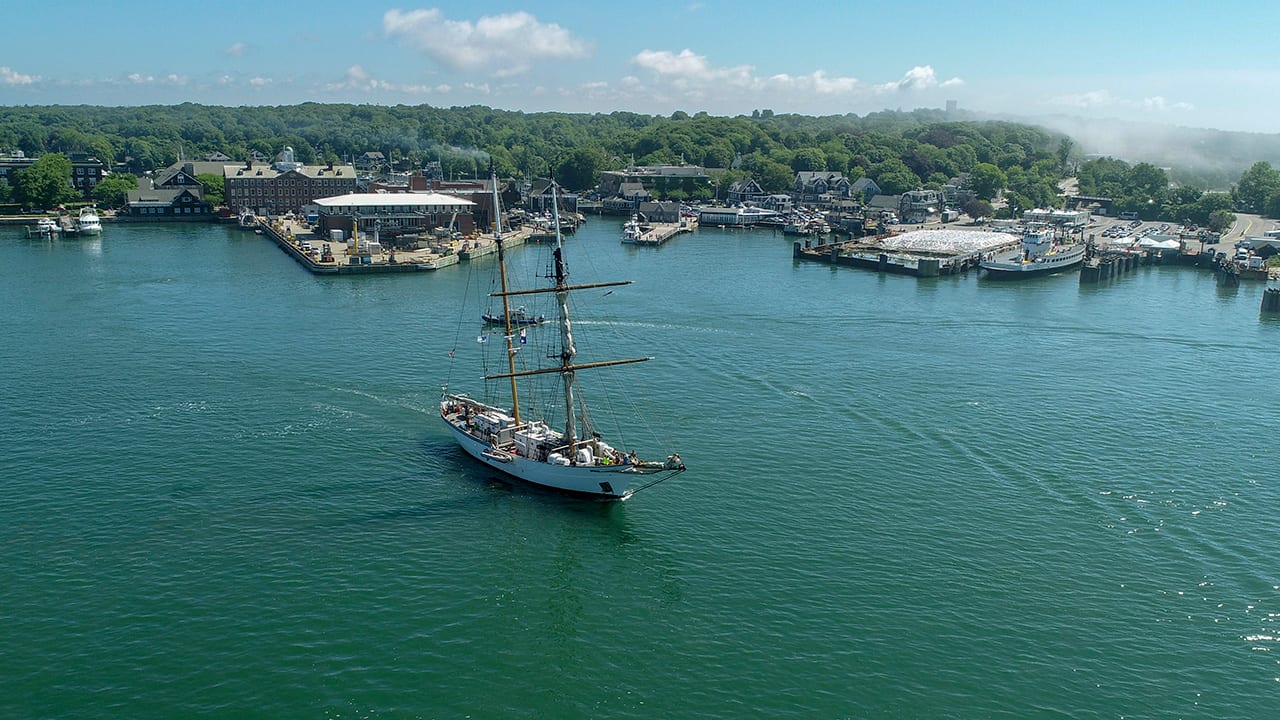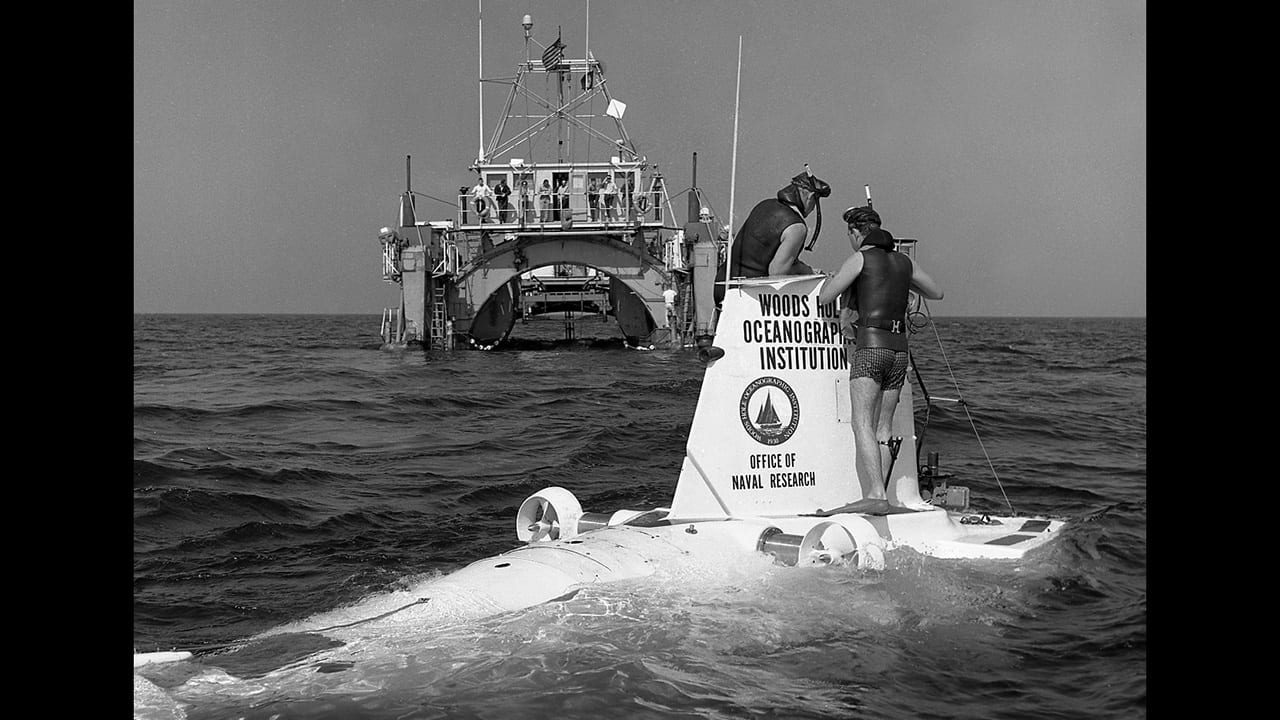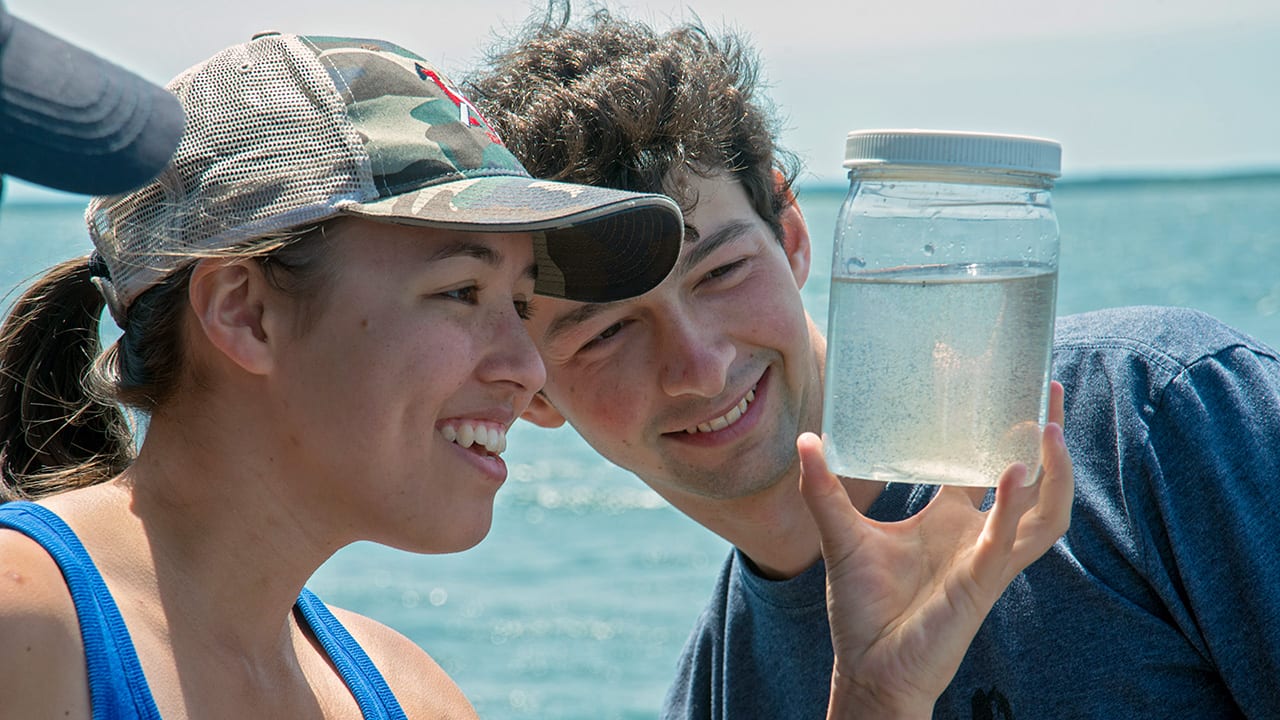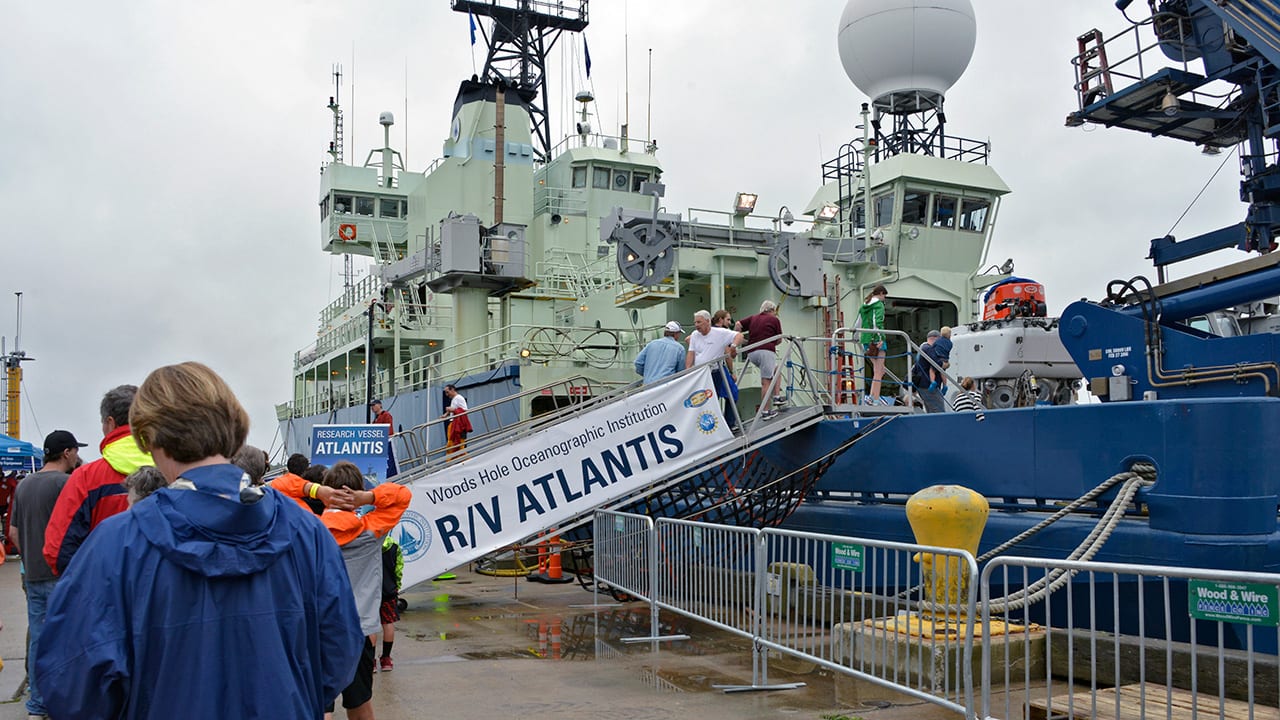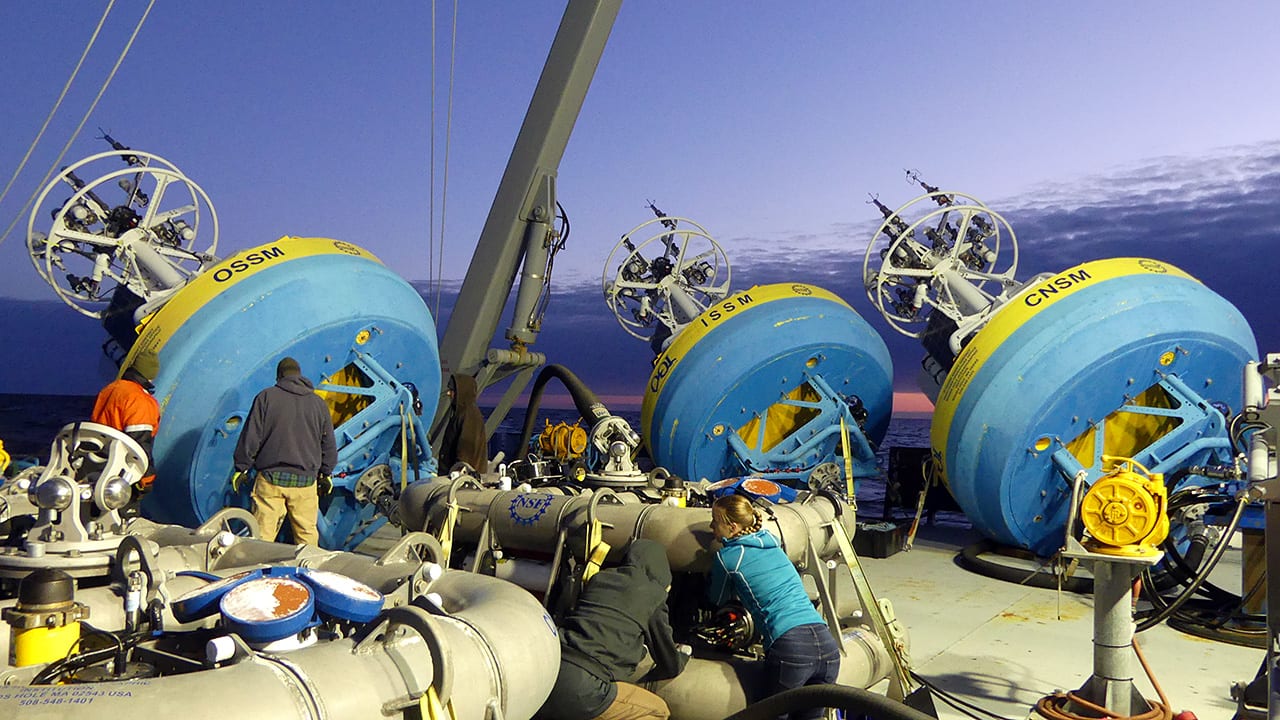Multimedia Items
An Unexpected Guest
This young octopus was photographed in a tank aboard the NOAA research vessel Henry B. Bigelow during WHOI’s first ocean twilight zone expedition earlier this month. “Boo,” as the Atlantic…
Read MoreWelcome, Alucia
The research vessel Alucia arrived in Woods Hole, Mass., for the first time on Saturday, August 25. The ship was re-fit in 2011 and, since that time, WHOI has played…
Read MoreNetting the Deep
A high-tech version of the humble sampling net, the MOCNESS (Multiple Opening/Closing Net and Environmental Sensing System) sits aboard the research vessel Henry B. Bigelow earlier this month, ready to…
Read MoreThe Atlantic Meets the Mediterranean
Through the narrow Strait of Gibraltor, water from the Atlantic Ocean enters the Mediterranean Sea. The Atlantic water is less salty and less dense than saltier Mediterranean water, so the…
Read MoreA High-Flying Success
Scientists from the Woods Hole Oceanographic Institution have gathered many medals and awards, but perhaps none is more coveted than the Albatross Award, the stuffed bird in the cage held…
Read MoreStrong Foundation
The Woods Hole Oceanographic Institution was founded on January 6, 1930, following the recommendations of a National Academy of Sciences Committee on Oceanography. The chair of the committee, Frank R.…
Read MoreBarreling Through the Ocean
An amphipod known as a Phronima is often cited as the inspiration for the alien queen in the 1986 blockbuster movie “Aliens.” It inhabits the sac-like body of a barrel-shaped salp,…
Read MoreRAFOS floats
Scientists deploy a RAFOS float during a research cruise in the Denmark Strait to track the sources of sinking waters of the Atlantic Meridional Overturning Circulation—a key component of the Great Ocean…
Read MoreHearing Tests on Wild Whales
The first hearing tests on a wild population of healthy marine mammals revealed that beluga whales in Bristol Bay, AK, have sensitive hearing abilities and far less extensive hearing losses…
Read MoreSampling Seawater
During a 2017 research cruise in the Mediterranean Sea, MIT-WHOI Joint Program student Mara Freilich and Simón Ruiz from the Mediterranean Institute for Advanced Studies, use an instrument called a CTD (Conductivity-Temperature-Depth) to…
Read MoreWhy the Weight?
Remotely Operated Vehicles (ROVs) typically use tethers for remote control, but as they explore deeper parts of the ocean, traditional tethers can weigh them down. The Nereid HT ROV, shown here…
Read MoreLaunching of a Legacy
In 1975, the newly constructed hull of research vessel Oceanus first entered the water at Peterson Builders shipyard in Sturgeon Bay, Wisconsin. During its 36-year career, Oceanus crisscrossed the Atlantic helping…
Read MoreA Half-Century Ago
Marvel Stalcup (with glasses) and Gus Day launch an early instrument to determine current speeds and directions from the research vessel Crawford circa 1965. Data were recorded on photographic film. Modern oceanographers use Acoustic…
Read MoreShipshape on Land and at Sea
These colorful straps and ropes—or lines, as they are known on a ship—were photographed hanging outside the rigging van of John Kemp aboard the research vessel Neil Armstrong. Kemp, who…
Read MorePhysics and Math for the Real World
Woods Hole Oceanographic Institution acoustic oceanographer Andone Lavery talks about what drew her to marine science.
Read MoreA Sustainable Collaboration
WHOI postdoctoral investigator Andrea Bogomolni removes winter skates (a fish related to sharks and rays) from a gillnet on a fishing boat off Cape Cod, Mass. These skates were caught…
Read MoreOcean Twilight Zone Engineer Kaitlyn Tradd
Mechanical Engineer Kaitlyn Tradd describes how a day in a WHOI exhibit center changed her life, as she prepares to explore the Ocean Twilight Zone in an unprecedented expedition aboard…
Read MoreVirtual Floats
Sam Levang, a graduate student in the MIT-WHOI Joint Program, uses models to simulate ocean circulation. Into his virtual ocean, he injects “synthetic” floats to see where ocean currents take…
Read MoreNiskin Bottles
WHOI researcher Phil Alatalo (far right) explains the operations of a standard oceanographic tool—the Niskin bottle—to undergraduate students in the WHOI Summer Student Fellowship (SSF) program aboard the research vessel…
Read MoreFair Winds and Following Seas, Finally!
The dense fog that blanketed Woods Hole for two days in late June finally cleared to blue summer skies, allowing MIT-WHOI Joint Program students to embark—two days late—on the Jake…
Read MoreThe Little Sub That Still Can
The human-occupied submersible Alvin surfaces from a mission to the seafloor in a photo taken circa 1967—three years after the sub was first built. Two crewmen known as “swimmers” assist…
Read MoreSnow Globe of Plankton
2018 Summer Student Fellows Maya Chung (Harvard University) and David Brinkley (Amherst College) marvel at a jar of plankton collected from Buzzards Bay in mid-July. The samples were collected during…
Read MoreTake a Science Stroll Tomorrow
Visitors line up to take a tour of WHOI’s research vessel Atlantis and the human-occupied submsersible, Alvin, during the 2017 Woods Hole Science Stroll. The ship and sub will be…
Read MorePoised for Action
Every six months, the imposing, sensor-laden moorings that make up the Ocean Observatories Initiative Pioneer Array need to be “turned”—hauled out of the water and substituted with clean, repaired, and…
Read More
